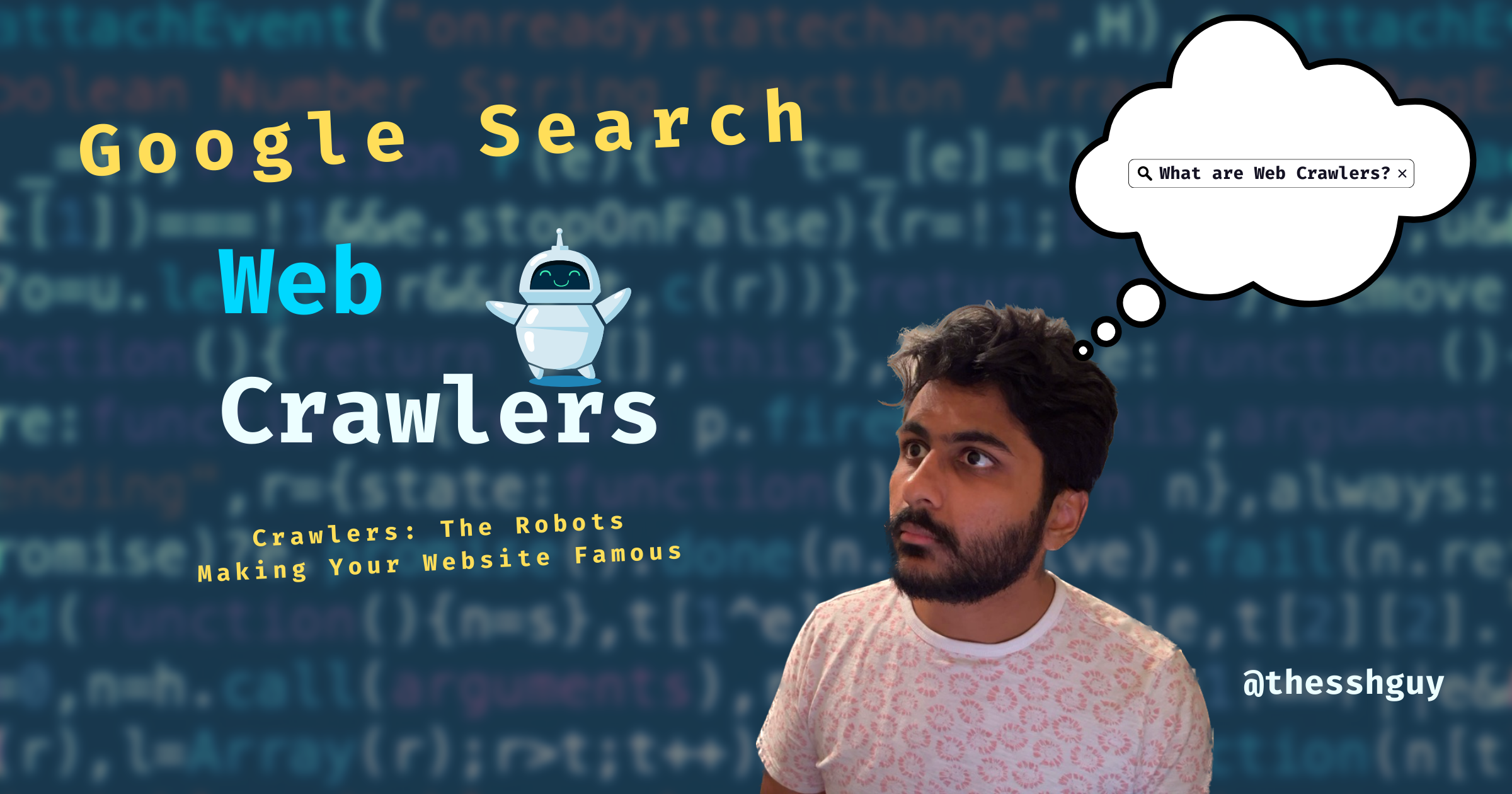How Google Crawls the Web: A Simple Overview
 Sai Hari
Sai Hari
I've been trying to learn more about SEO in the context of Google search. With that in mind, I wanted to share what I'm learning as a reference for myself and others. Before we get to SEO, we need to understand how Search works in general, and that process starts with something known as Crawling.
Crawlers find webpages and make them searchable.
Google enlists the help of specialized bots called crawlers to do this. Once the webpages are found, Google can index them and make them discoverable for other people through its search interface.
A crawler is an automated program that works by:
Browsing the internet
Downloading web pages
Extracting links for further crawling
The first step is URL discovery.
Google is constantly looking for new and updated pages to add to its list of known pages. It uses the following methods to do this:
Following links from already known pages
Using sitemaps submitted by website owners
The first method is pretty basic. Find a website and navigate to any links that the website has on it. The second method might not be familiar to you, but sitemaps play a significant role in helping Google discover your web pages.
A sitemap is a collection of URLs to pages on your site and can include additional metadata.
Sitemaps aren't mandatory, but they can drastically improve Google's ability to find your content. You can create and submit a sitemap to Google to ensure your pages are crawled and indexed efficiently.
How does Google's crawler work?
Google's crawler uses an algorithmic process to determine:
Which sites to crawl
How often to crawl a site
How many pages to fetch from a site
Google uses an algorithm to determine these things to avoid overloading a website's resources. Every website is different. A website's response times and overall quality of content determine the crawling behavior.
Once a URL is discovered, Google renders the page to view dynamic content.
After the crawler discovers a URL, it fetches the page and its resources to determine what's on it.
Part of this process involves displaying and executing the code returned to generate a visual representation of the website. The content on your page might load dynamically via JavaScript, so Google needs to render the page to see what a user would see.
The Google Search crawling process is key to getting your web pages found and searchable. By understanding how Google's crawler finds, fetches, and shows pages, and by using tools like sitemaps, you can boost your site's SEO and make it more visible in search results.
Subscribe to my newsletter
Read articles from Sai Hari directly inside your inbox. Subscribe to the newsletter, and don't miss out.
Written by

Sai Hari
Sai Hari
Content about improving developer process, tooling and code. Level 4 Vim Sommelier | I think, therefore I program